Geography
LOCATION - Abruzzo is a region mid-way down the east coast of Italy with its shores hugging the Adriatic Sea and rising in the West to the Apennine mountain range. It is bordered by the regions of Marche to the North, Molise to the South and Lazio to the West.
Abruzzo has 4 provinces - L'Aquila, Teramo, Chieti and Pescara, the latter of which plays host to the Abruzzo National Airport.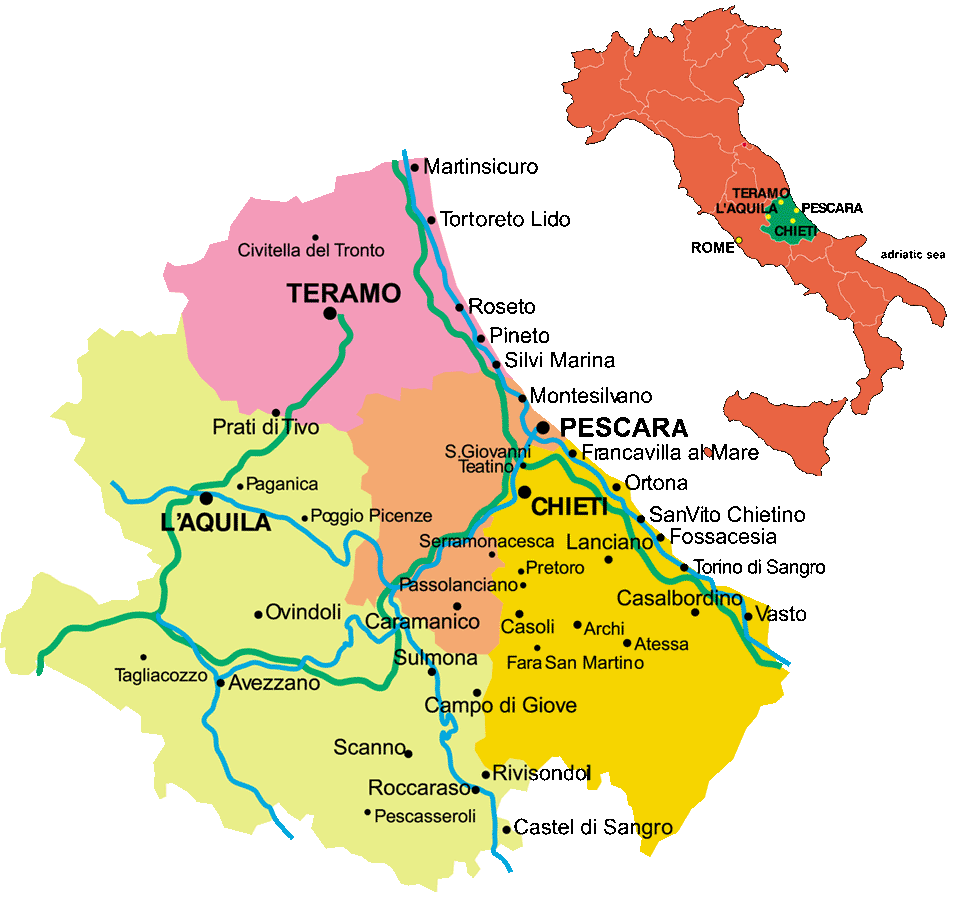
TERRAIN - Abruzzo is quite mountainous which is good for the skiing in winter and nice for summer picnics. Perched on many of these hills, seemingly precariously so in some instances, are little villages and towns dating back to medieval times. In the western half of the region there is a series of mountainous chains including the highest peaks of the Apennines - Gran Sasso's Corno Grande (2912 mts) and Majella's Monte Amaro (2793 mts).
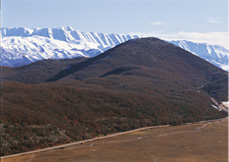
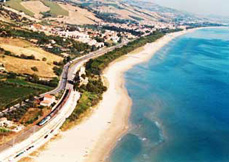
The coastline of Abruzzo is varied, changing from sheer cliffs to rock, shingle and sandy beaches. There are numerous bays and coves dotted along the coast but also many long sandy beaches which become home to the thousands of holidaymakers who visit Abruzzo in the summer months.
All rivers flow into the Adriatic, apart from the Liri and the Turano which flow into the Tyrrhenian. The main rivers ie. the Vomano, the Aterno-Pescara and the Sangro originate from the mountainous chains and have considerable flows; the others, generally with a shorter course and scarce flow, originate from the eastern side of the mountain. As far as lakes are concerned the major one is Scanno at 922 slm in the valley of Sagittario, the other smaller lakes being Pantaniello, Campotosto, Barrea and Bomba.
CLIMATE - The average temperatures in Abruzzo range from 8°C in the winter months to 24°C in the summer, with blue skies being a regular feature. The great difference in altitude between the higher ground and coastal regions accounts for the sub zero temperatures in winter and the tropical mid 30s on the beach in July and August.
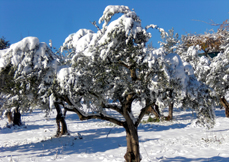
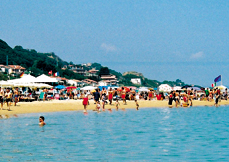
The rainfall reaches its maximum in November and the minimum in the summer when thunderstorms break the heat every so often. As a result of the various altitudes throughout the terrain snow can be found all year round but most areas are effected by the snow for only a few weeks in winter.
Seasons still very much exist in Abruzzo: the winter months, December, January and February, warranting scarves, gloves and all sorts of warm clothing - brisk walks being the order of the day; springtime, March, April and May, sees the transition from winter to summer with temperatures fine for the tourist but still too cold for the locals to shed their fleeces; summer can begin as early as May and continue until October but generally includes the months of June, July and August when lots of sunshine makes up for the cold winter; autumn is a busy season, harvesting the grapes and olives so the climax of the hot summer is soon forgotten.
WILDLIFE - The 4 large Parks in Abruzzo are home to wild animals such as the wolf, red and roe deer, chamois and the Marsican Brown Bear, until recently an endangered species, but even in the more inhabitated regions there is an abundance of wildlife.
Abruzzo has its fair share of foxes, badgers, moles and other pests such as the 'faina', a stoat like animal. Dormice, hares and squirrels are also frequently seen. The 'cinghiale' or wild boar is treated as game and may be encountered whilst driving home through the hills at night.
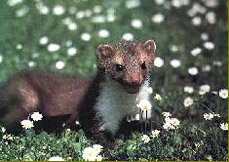
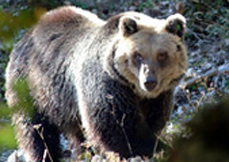
Birds of prey such as the golden eagle, falcons, kestrels, buzzards, goshawks and sparrowhawks are another beautiful sight as they are spotted soaring above the woodlands. The 'chiodo' is always close at hand and the owl, like everywhere else, may be heard and spotted at night.
PLANTLIFE - The valleys, furrowed by rivers, are lush with poplars, willows and alders. Higher, in the Apennine mountain woods, the Beech is predominant, but mingled with Sycamore Maple, Sorb, Laburnum, Hazel, Wild Apple-tree, Wild Pear and Wild Cherry-tree.
The plains and lower hills are dominated by olive groves and vineyards along with fig, apple, peach, apricot, almond and walnut trees. Summer brings a large harvest of tomato, used widely in the Italian diet.
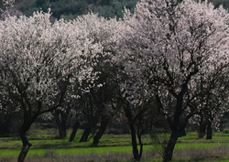

Not much grows in the winter but spring is a time to forage for asparagus and many other wild greens which the locals use as part of their diet. As summer approaches each piece of spare land will be used to cultivate aubergines, courgettes, peppers, potatoes, peas, beans, carrots and all other sorts of vegetables.
In October the vines will be heavy with grapes, ready for harvesting, and in November the olive trees will have their fruit raked from their branches.








